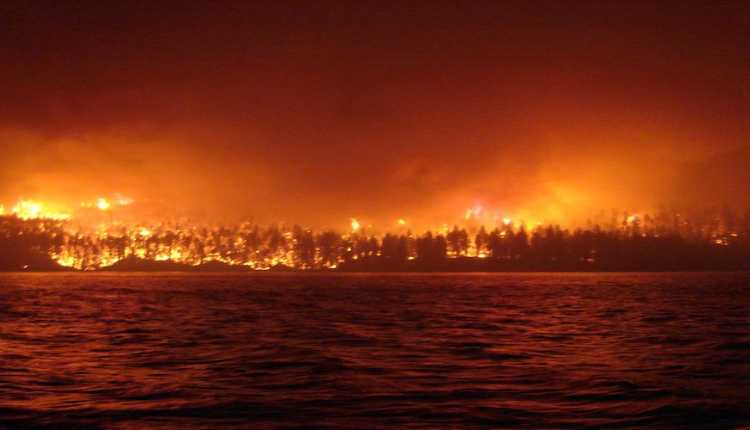There has been rapid development in a previous couple of years. This is due to the rapid growth of industrial areas. However, how the negligence of a single person can outweigh many individuals, it could be revealed by some major accidents in the world.
Either it is a disaster or an industrial accident, it can come at any time, nothing can be said about it. But it is also true that due to the small lapse of a person, how many people had to bear the brunt of it.
The 10 Human Mistakes That Triggered Terrific Industrial Disasters are:
1. Seveso Disaster (1976) – Italy

The Seveso disaster was an industrial accident that occurred around 12:30 to 7:00 p.m. on July 10th, 1976. The Seveso catastrophe was so named on the grounds that Seveso was the community most influenced. Seveso is a community with a populace of 17,000 in the year 1976.
A chemical plant, work begun many years earlier close by Meda, owned by the company ICMESA (Industrie Chimiche Meda Società), a subsidiary of a pharmaceutical giant Hoffmann-La Roche (Roche Group). The industrial facility building was built many years back, and the neighbourhood populace didn’t see it as a potential wellspring of threat.
It was weekend, and the plant was being shut down. One of the tanks in the chemical plant was getting hazardously hot as cooling sources were turned off. This overheating made the reactor detonate. An enormous cloud of dioxins was released in the northern Italian village of Seveso.
The ecosystem was destroyed in this area due to this catastrophe. A total of thirty-three thousand animals found dead, and by 1978, more than 80,000 animals had been slaughtered. Plants had also been suffered, and the soil has the highest degree of dioxide contamination.
Actually, the accident was kept secret for ten days until strange things were noticed, like leaves falling from trees, farmyard animals dying and skin problems, especially for children. – Damiano Di Simine.
Four weeks later, although there were no human fatalities, many people became extremely ill. Following the accident, countless children and some adults began to develop inflammatory irritations on their skin refer to as chloroquine due to the Oxy positive.
2. Chernobyl Disaster (1986) – Ukraine

The Chernobyl nuclear accident is the greatest nuclear mishap in human history that occurred on the night of 25-26 April 1986 in reactor number 4 of the Chernobyl nuclear plant in Ukraine. This nuclear plant was built near the town of Prypt (where nobody lives now) in northern Soviet Ukraine.
This incident happened late at night when the defence equipment of this plant was being investigated whether they work or not when the power of the plant went out, which is why the reactor number 4 equipment was deliberately shut down. However, due to construction deficiencies and operational disturbances, the nuclear reaction in the reactor core was greatly accelerated, due to which the heat generated turned all the water into steam, the pressure increased due to the explosion in the reactor and the graphite ignited which Burned continuously for 9 days and spewing radioactive substances into the atmosphere.
31 people were killed in this accident. This led to such a large amount of righteous radioactive substances, which was 10 times more than the Hiroshima and Nagasaki nuclear attacks. After this accident, about 60 thousand people were brought to safe places. About 2 lakh people were displaced.
It is believed that during this time, so much radioactive material is released into the atmosphere as during the explosion of an atomic bomb. These radioactive materials were found in the atmosphere of the Southern Soviet Union and European countries, causing a lot of loss of life and property, which continues even today.
The Chernobyl nuclear accident is considered to be the most significant event in nuclear plant history in terms of life and property. This accident is one of only 2 accidents that have scored the highest number 7 on the International Nuclear Tragedy scale (the second accident occurred in Fukushima, Japan in 2011). The nuclear reactor that exploded was built in 1983. After this, the second accident occurred in Fukushima, Japan, which proved similarly fatal. Fukushima was installed in the Pacific Ocean next to Japan, and this nuclear reactor continued to burn for 4-6 days.
3. San Juanico Disaster (1984) – Mexico

One of the fatal industrial disasters in world history is “San Juanico Disaster”. This deadly catastrophe struck the morning of November 19, 1984, and lasted from 5:30 am till 11:00 am the following day.
The series of enormous blasts at a Pemex liquid petroleum gas (LPG) storage plant and the gigantic fire, they triggered killed between 500 and 600 people. Of them, more than 300 dead bodies never identified and left as many as 7,000 others with severe burns. This savage blast and fire made 10,000-60,000 people homeless and caused $ 31 million of damages.
About 1/3 of Mexico City’s LPG supply, somewhere in the range of 11,000 cubic meters, burned in the fire following the blasts, which officials said were brought about by a gas pipe that burst because of excessive pressure.
Most of the damage to the city was from fires, not due to explosions. Many lessons can be learned from the tragedy.
4. Texas City Disaster (1947) – USA

A few years back, Texas city burned its way into the nation’s conscience. The worst industrial accident in American history made Texas city synonymous with disaster. A massive explosion happens during the loading of fertilizer onto the merchant ship Grand camp at a wharf in Texas City, on April 16, 1947.
The bright orange smoke spread in the sky from a burning ship, creating a scary view. Firefighters were busy pouring water on the fringe freighter grand camp at the city docks across from the Monsanto plant.
The ship had been loaded not with grain, but with ammonium nitrate fertilizer, the same ingredient that would be used years later in the Oklahoma City bombing. The Texas City blast was so strong. It registered as an extremely strong earthquake. It created a tidal wave that washed a barge into a parking lot. Two aeroplanes circling the ship blasted from the sky, flying debris, punctured chemical storage tanks, creating an even larger Inferno.
The explosion killed at least 581 people, including school children who had come to watch the fire. However, the danger was off from over.
5. Courrieres Coal Mine Disaster (1906) – France
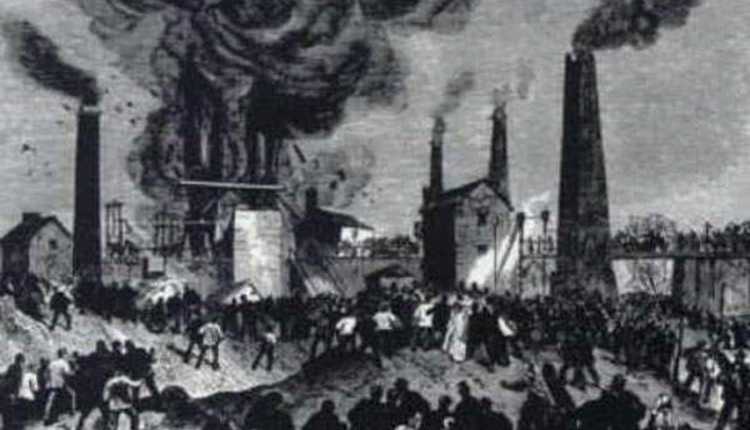
The Courrieres mine disaster in France is the second destructive coal mining catastrophe ever, with an approximately 1,100 loss of life. The coal mining catastrophe happened on 10 March 1906 by an extensive blast in an underground fireplace in a pit in the Colliery.
The fire was detected around 270 m underground in the Cecil pit toward the evening the day preceding the blast. The outlets of the pit were shut to keep oxygen away from reaching the fire.
The next morning, a still-burning fire in the pit caused a major explosion and destroyed everything. All workers, whether in the mine’s tunnel or above the mine, were killed in the disaster.
The cracks in the pit walls were believed to allow flammable gases to cause underground dust explosions. The reason for the initial fire was suspected to be due to the malicious care of the mining explosives or the burning methane by the flame of the miner’s lamp.
6. Rana Plaza Collapse (2013) – Bangladesh
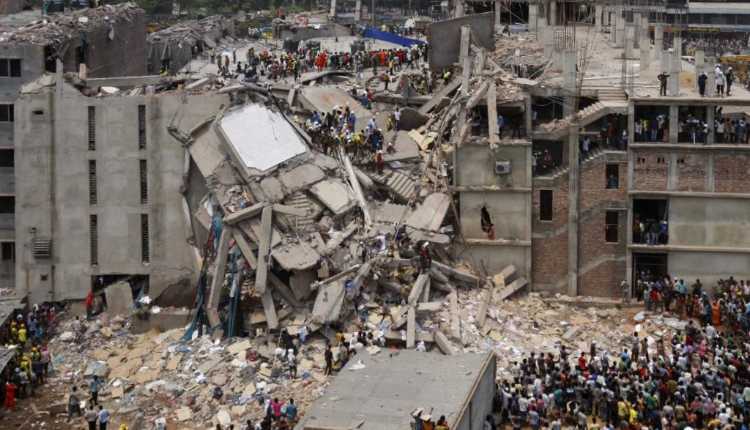
The Rana Plaza collapse (also called the 2013 Dhaka garment factory collapse) was a structural malfunction that happened on 24 April 2013 in the Savar Upazila of Dhaka District, Bangladesh, where an 8 story building called “Rana Plaza” collapsed.
The building contained dress production lines, a bank, lofts, and a few shops. The shops and the bank on the lower floors were quickly shut after cracks found in the building’s structure.
The structure’s owners overlooked alerts to avoid using the building after cracks had appeared the day before. The workers were ordered to return the next day, and the next morning, the building collapsed.
The quest for the dead ended on 15 May 2013 with a loss of “one thousand one hundred and thirty-five” lives. Roughly “two thousand and five hundred” injured individuals were rescued from the collapsed structure alive. It is viewed as the deadliest structural mishap in modern mankind’s history.
The disaster could have been kept away from, with admonitions of cracks in the structure and possibly many lives could be saved. A huge number of individuals lost their lives today because of the negligence of only one.
7. Benxihu Colliery Disaster (1942) – China

The disaster happened on 26 April 1942 in the Honkeiko coal mine shaft, situated close to Benxi in the Liaoning territory of China.
The deadly blast of the underground coal mine shaft was brought about by a blend of gas and coal dust. The underground fire burst out of the mine passage.
The ventilation setup was stopped, and the pit head was sealed by the mine administrator to deprive the underground of oxygen. An electrified barrier was raised around the pit to discourage the passage of the excavator’s family members.
The Japanese compellingly worked the coal mine shaft until the end of World War II in the year 1945. The Soviet Union led an investigation of the mine mishap, following the freedom of the Liaoning area from the Japanese Army’s control.
Carbon monoxide poisoning because of the closure of the ventilation setup accounted for to have caused the greater part of the deaths. The Benxihu colliery disaster cost approximately 1600 lives and is accepted to be the extremely awful coal mining catastrophes ever.
8. Halifax Explosion (1917) – Canada
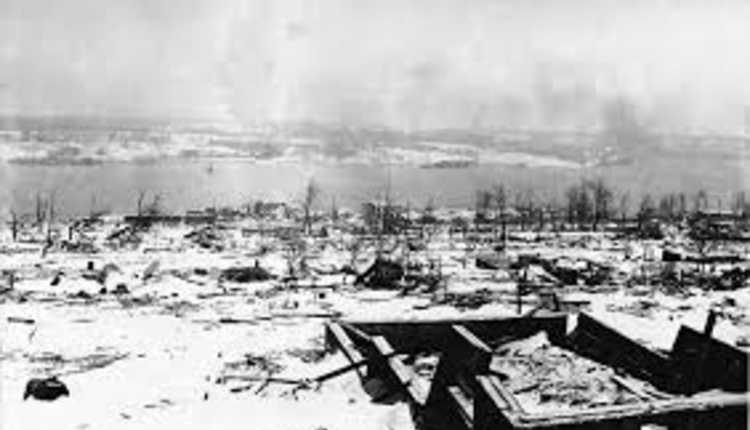
The Halifax explosion was a maritime disaster that happened on the morning of December 6, 1917, in the harbour of Halifax in the Canadian province of Nova Scotia. The tragedy occurred when a French cargo ship, known as SS Mont-Blanc, was carrying extremely explosive cargo, which collided with the Norwegian ship, SS Imo.
Mont-Blanc, carrying picric acid, gun cotton, fuel benzol, and explosive TNT, arrived from New York on December 5, 1917, under the captaincy of AEE Le Medec. At approximately 8:50 a.m., the two ships, SS Mont-Blanc and SS Imo collided. The collision itself was not serious, but the SS Mont-Blanc caught fire. The fire intensifies and detonated about twenty minutes later.
The explosion destroyed all structures within a range of approximately 1 km. The disaster produced a powerful blast wave, emanating from an eruption point of 3,300 ft at a temperature of 5,000°C. White-hot iron-metal debris began to fall on Dartmouth and Halifax. The barrel of Mont-Blanc’s forward gun melted and thrown away about 3.5 miles. The explosion resulted in a tsunami and took SS Imo ship to the edge of Dartmouth. The explosion destroyed the people living in Halifax. Fire, explosion, rubble or collapsed buildings caused more than 2,000 deaths and 9,000 injuries.
9. Exxon Valdez Oil Spill (1989) – USA
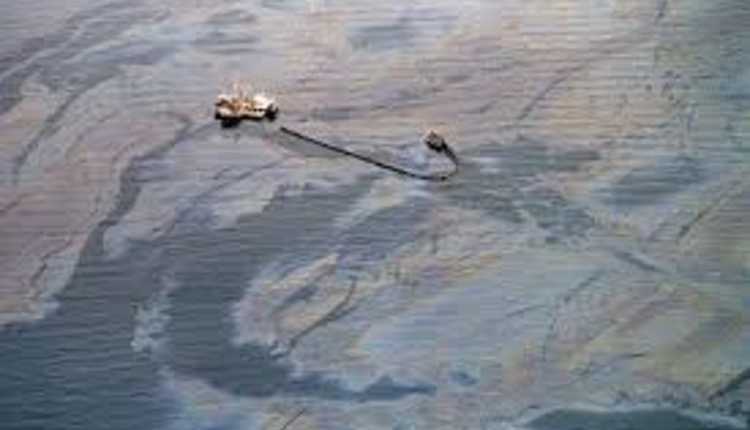
On 24 March 1989, a ship named Exxon Valdez, an oil tanker owned by the Exxon Shipping Organization, was carrying oil. The crude-laden Exxon Valdez entered Prince William Sound of Alaska after leaving its terminal.
It was round nighttime, all at once, the ship crashed into a rock. This brought about the Exxon Valdez to leak and eleven million gallons of oil wasted.
In line with US officials, the coast of Prince William Sound, about 1300 miles (2,092.15 kilometres) long, polluted in this accident. Heaps of birds and sea creatures killed as oil flowed into the water.
Data show that 100,000 to 250,000 sea creatures have killed in this accident…… Very depressing! That is too bad but a truth.
It is one of the most significant and worst environmental injuries. The accident brought about a large quantity of damage to the surroundings. Because of which lots of aquatic organisms died.
10. Bhopal Gas Tragedy (1984) – India

A terrible industrial accident happened on 2-3 December 1984 night in the Bhopal capital city of Madhya Pradesh state, India. A toxic gas leak occurred from the factory of Union Carbide, positioned in Bhopal, which killed more than 15,000 living beings over the years and plenty of humans additionally suffered from various types of physical disability. Tank no. E-610 contained methyl isocyanate (MIC) leaked in the Bhopal gas scandal, which used to make pesticides.
By November 1984, many of the factory’s safety equipment was neither in good precise nor other safety standards followed. As indicated by the locals and journalists, all the manuals kept for safety in the production line were in English, while most of the workers working in the factory had no knowledge of English. Also, the air vent cleaning pipe had stopped working. The difficulty turned into that the tank number E-610 had more MIC gas from the prescribed limit, the gas temperature was likewise 20 degrees rather than the endorsed approximately 5 degrees. Cooling sources, to keep Mick at a cooling level, were also turned off to reduce power bills. Because of leakage of water within the tank E-610, excessive heat and pressure created, and the inner temperature of the tank reached beyond two hundred degrees, after which the toxic gas leaked into the surroundings. And an enormous cloud of MIC gas was released in the surroundings of Bhopal city.
In step with authority figures, due to leakage of hazardous gas, around 2,260 people died in the accident. The Madhya Pradesh authorities had said 3,787 deaths because of gas leakage. In 2006, the government reported to the court mentioning that a total of 558,125 people injured due to this accident. Of them, around 38,478 were partially disabled, and approximately 3,900 were cases with permanently disabled. The issue was not restricted to the hour of the mishap. However, it is as yet affecting. There are serious fitness problems among kids stillborn.
United Nation reported,
The “1984 Bhopal Gas Tragedy” which killed thousands of people is among the world’s “Major Industrial Accidents” of the 20th century.

